If you think your Ollie does not float, no matter how much you slide up your front foot, try to change the way you think about it. Your front foot slides up the board because the board presses against the front foot, not because the front foot presses against the board.
When you pop the tail, the board lifts in an arc. The trajectory of this arc meets the position of the front foot, so by pulling up your front foot while the board is pushing against it, you can lift the board without intentionally pushing it against the nose.
Conversely, if you press your front foot against the board, the board will fall without lifting as you will cancel out its energy to lift. In this article, we will scientifically analyze how a skateboard lifts in an Ollie.
Summary
BOARD presses against the front foot NOT the other way around
The key to achieving a successful Ollie is to understand that the front foot slides up the board because the board presses against the front foot as the board comes up in the form of an arc. You don't intentionally press your front foot against the board. Otherwise, you will cancel out the force of the board to lift.
Achieving Height in Your Ollie: Importance of the front foot's trajectory
The height of an Ollie depends on how high you can pull up your front foot. Hold it down right after bringing up, and the difference in the speed of the board's center of gravity and the nose lifts the tail.
Simulation
Hit the icon in the middle to start a 3D animation.
Common Mistake in Ollie
A pitfall of "the sliding practice"
The most important thing to lift your Ollie is to understand that there is a big difference between pressing the front foot against the board while holding the tail and the role of the front foot in an actual Ollie. They are almost entirely different, except you can get used to the feeling of "rubbing the board with the side of your foot."
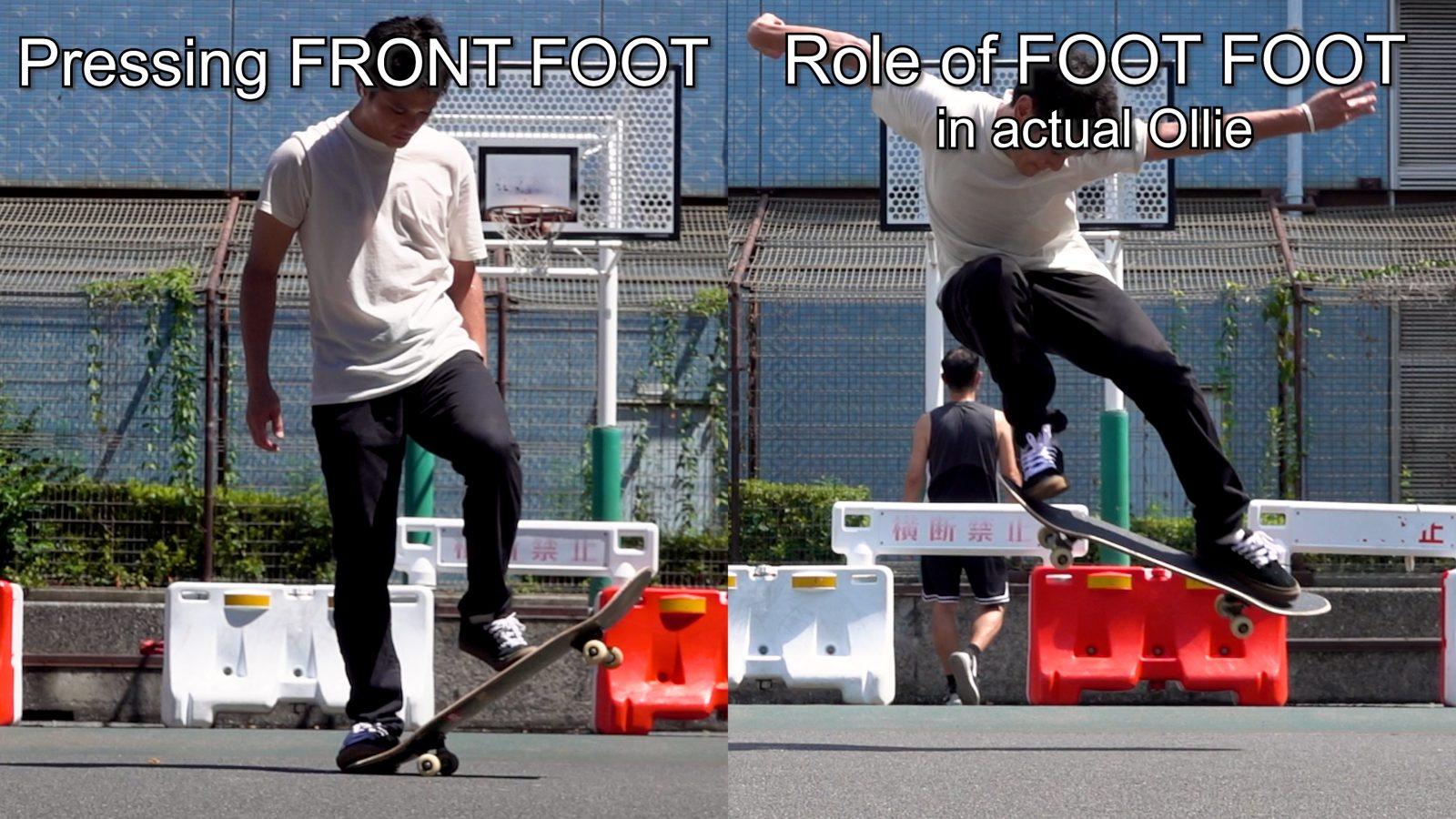
Physics in an actual Ollie
Let's compare the physical phenomena between them. In an actual Ollie, the board presses against the front foot while its angle increases to about 60 degrees.
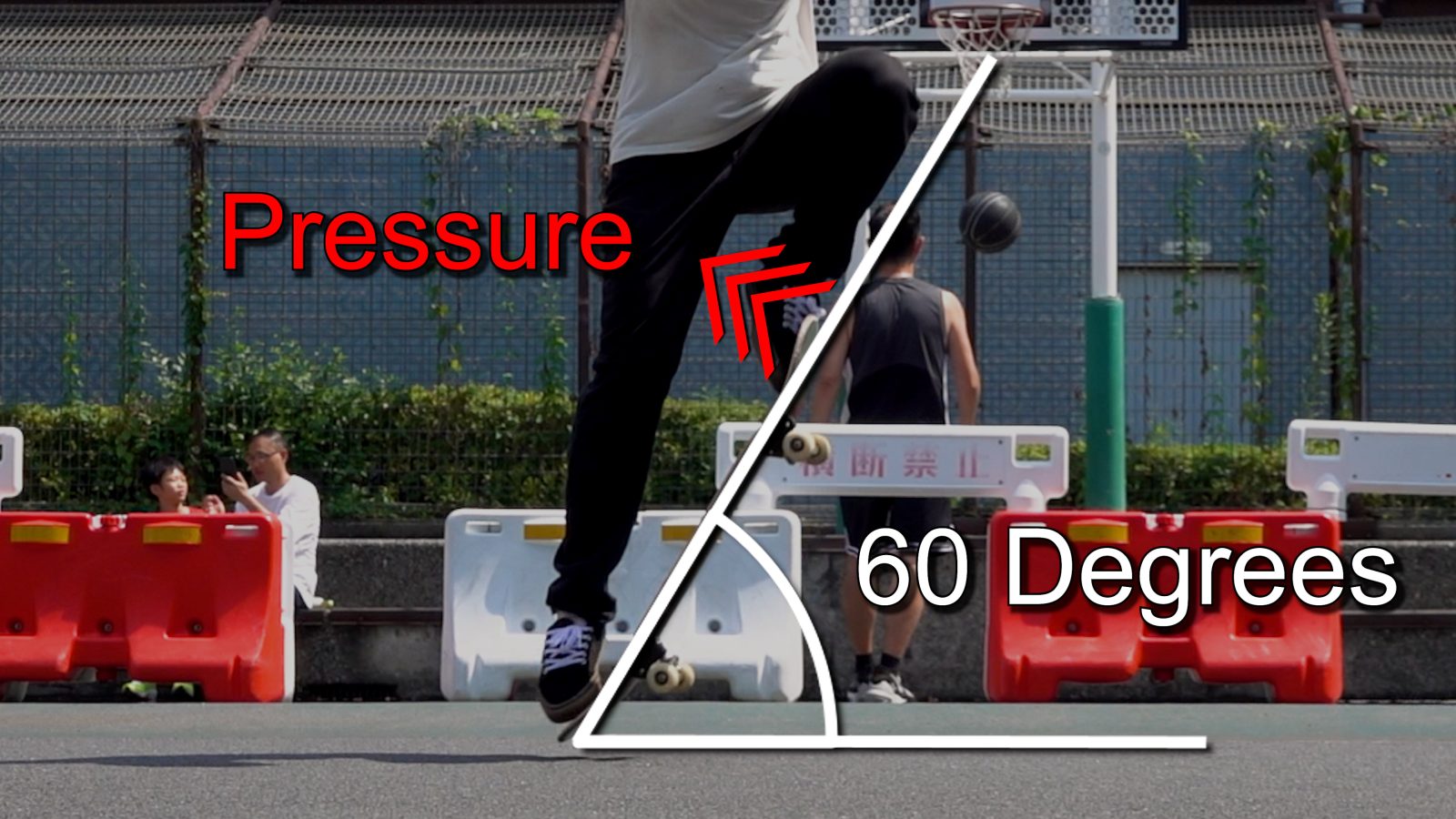
Physics in "the sliding practice"
On the other hand, in the practice where you hold the tail, its angle stays at around 30 degrees. Since it does not exert any force to press your front foot, you must intentionally press your foot against it. Thus, while this practice may help you get used to the feeling of rolling your foot and rubbing it against the board, it does not replicate the physics phenomena in an actual Ollie.
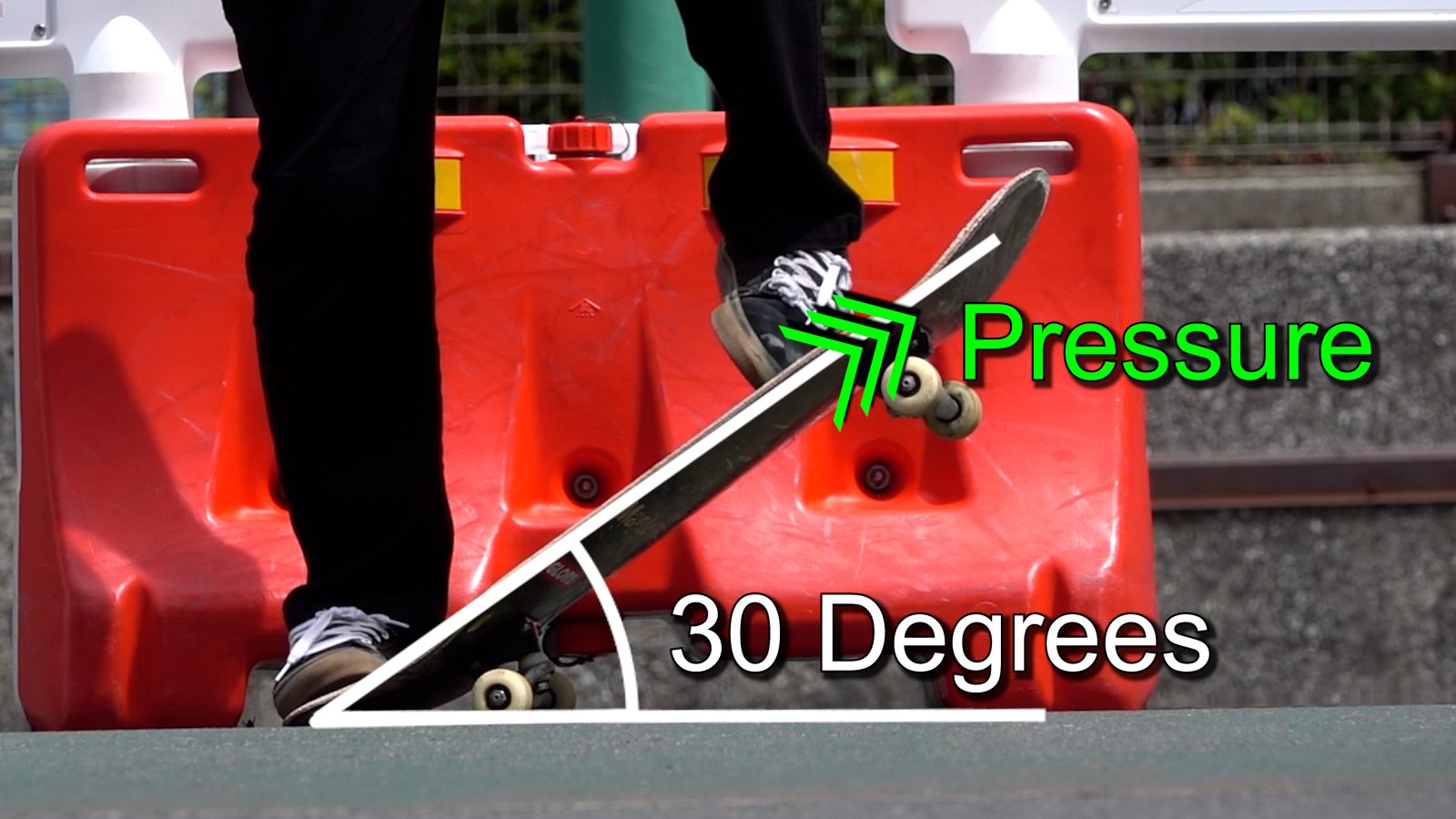
If you don't pay attention to this difference and try to roll your ankle intentionally in the actual Ollie, you may encounter problems where the board does not float. To understand what this means, let's see what happens to the board in an Ollie chronologically.
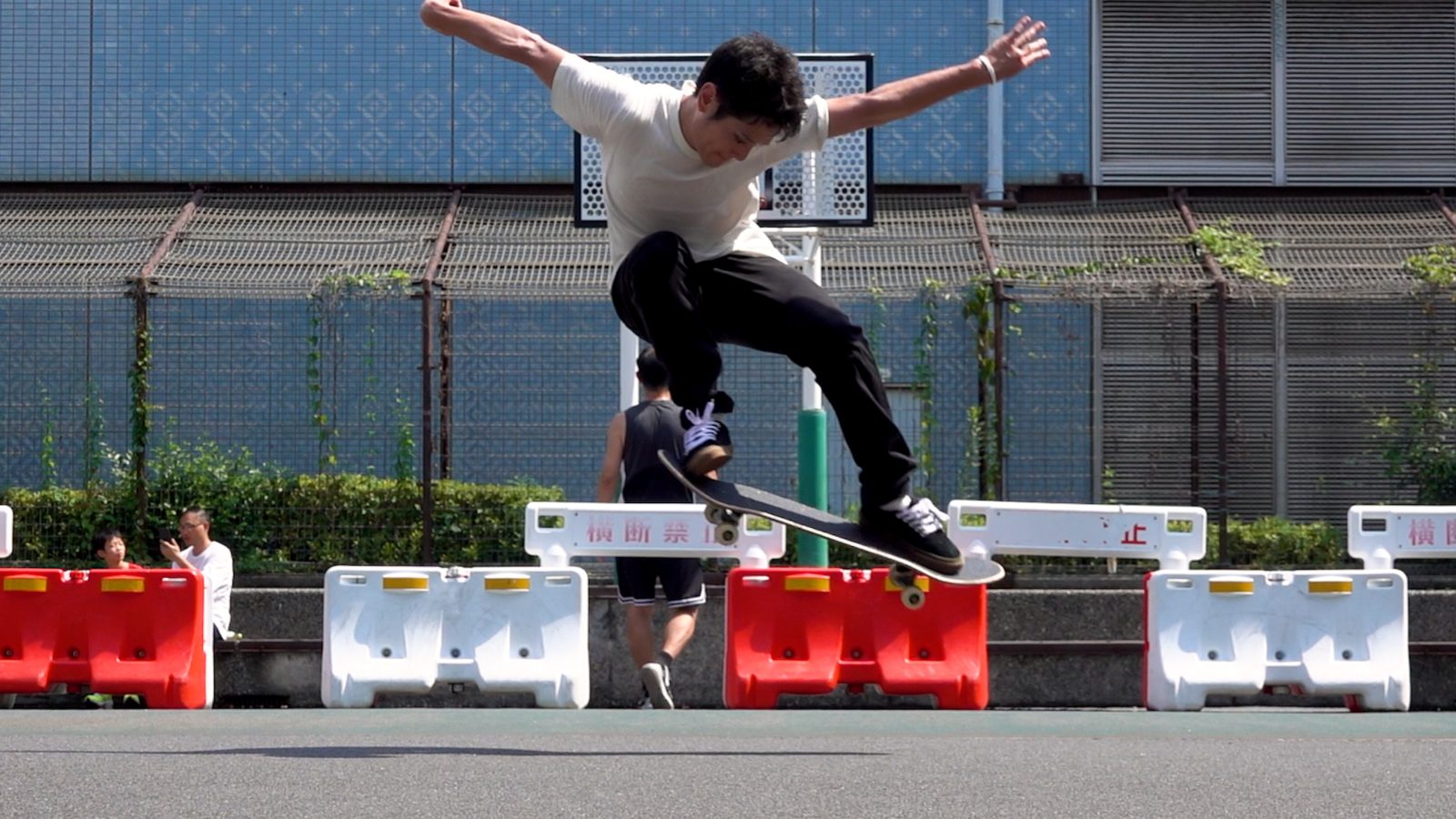
Step #1 Jump
Popping does not lift your weight
As explained in previous videos, the first step is to lift your body weight by jumping. It is a common misconception, but popping the tail does not lift your weight. When you are standing on your board, your body weight holds it down. So, no matter how much you pop the tail, the nose won't lift. Trying to pop the tail in this state is the same as trying to lift the nose when it has a weight equal to your body weight.
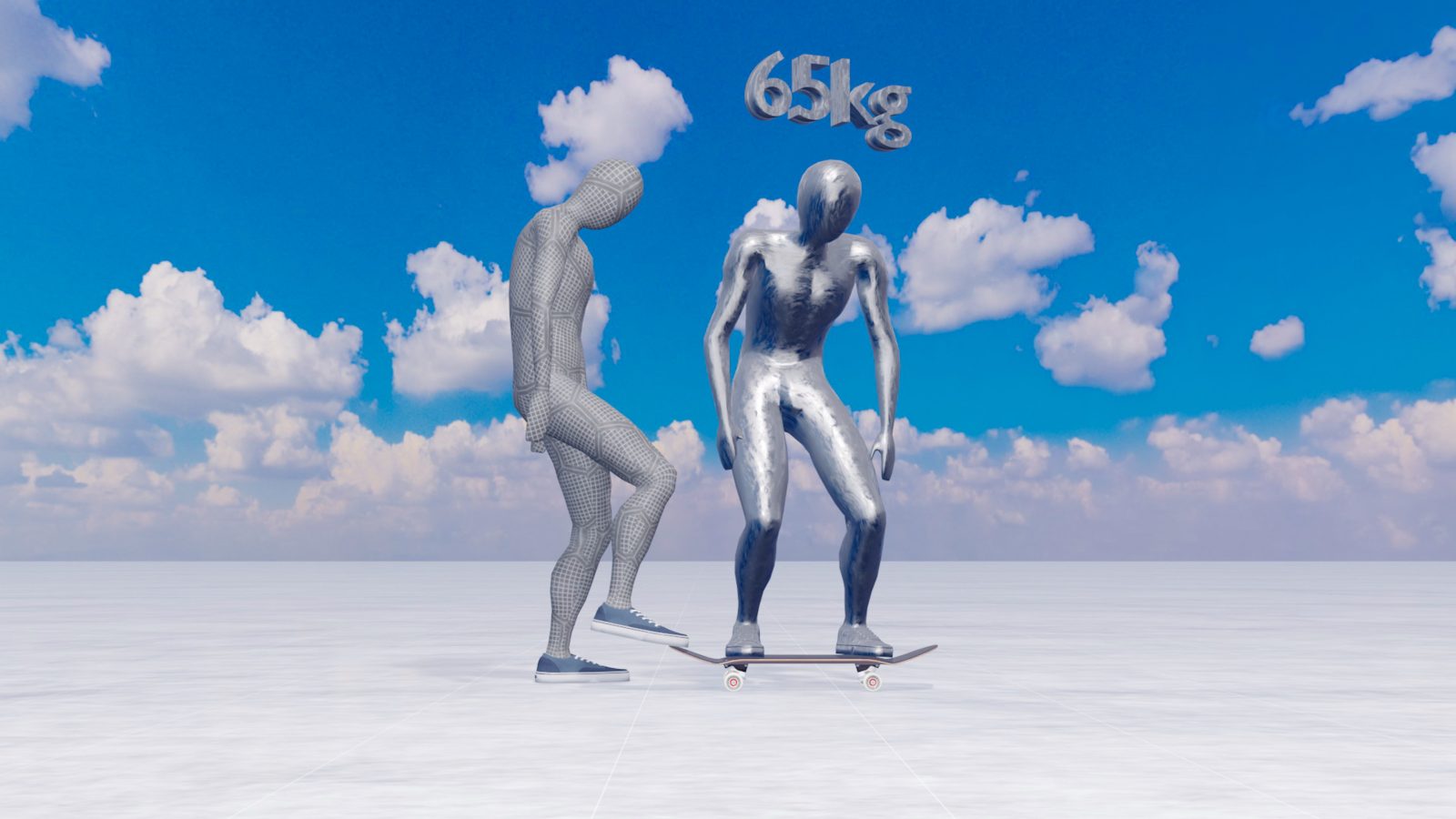
Reduce the pressure before popping
Due to this reason, you need to jump before popping to remove the pressure that your weight exerts on your board. To get used to this feeling, try Hippy Jumps in the middle of your Ollie practice. You don't need to jump so high. Concentrate on reducing the pressure on the board. Squat down, extend your body, and lift your body into the air.
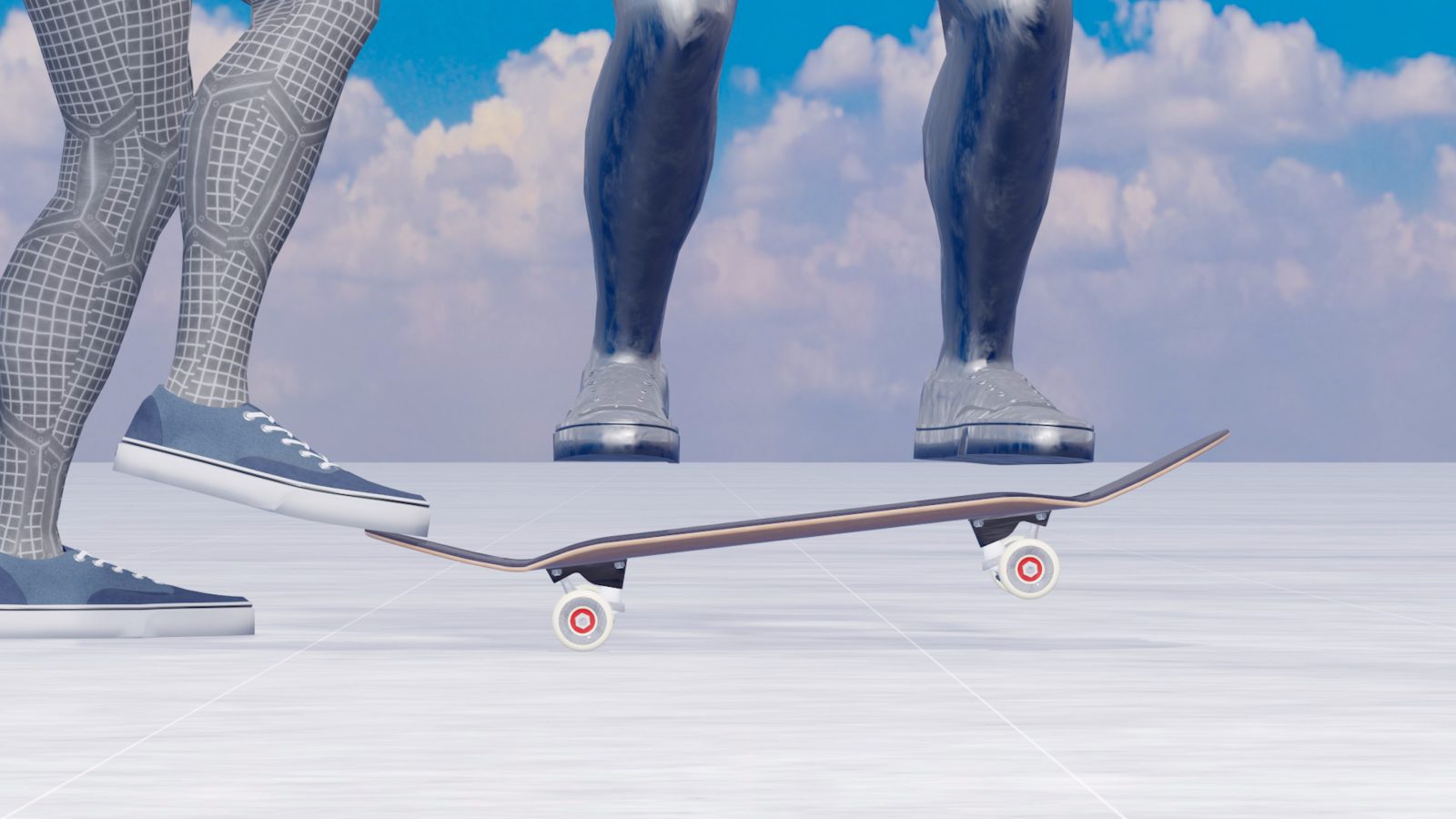
Step #2 Pop
Mechanism why the board lifts
Next, let's see the popping motion. When you pop the tail, the nose lifts in the form of an arc around the tail. This behavior of the board, combined with the upward force acting on the front foot, lifts the board.
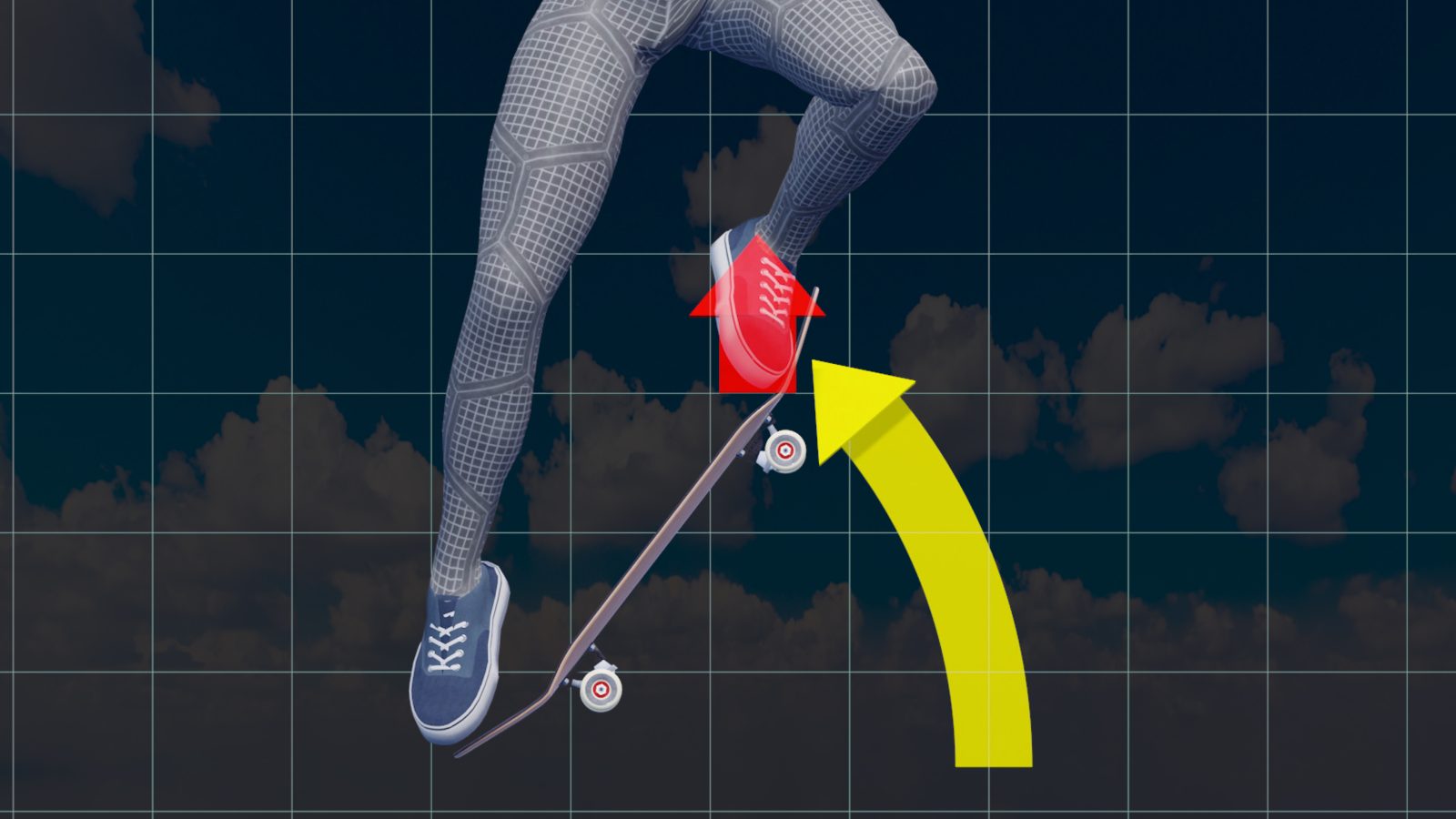
Pop on the toe and avoid stomping on the tail
Place your back toe in the center of the tail, use your ankle to pop, and avoid stomping on it.
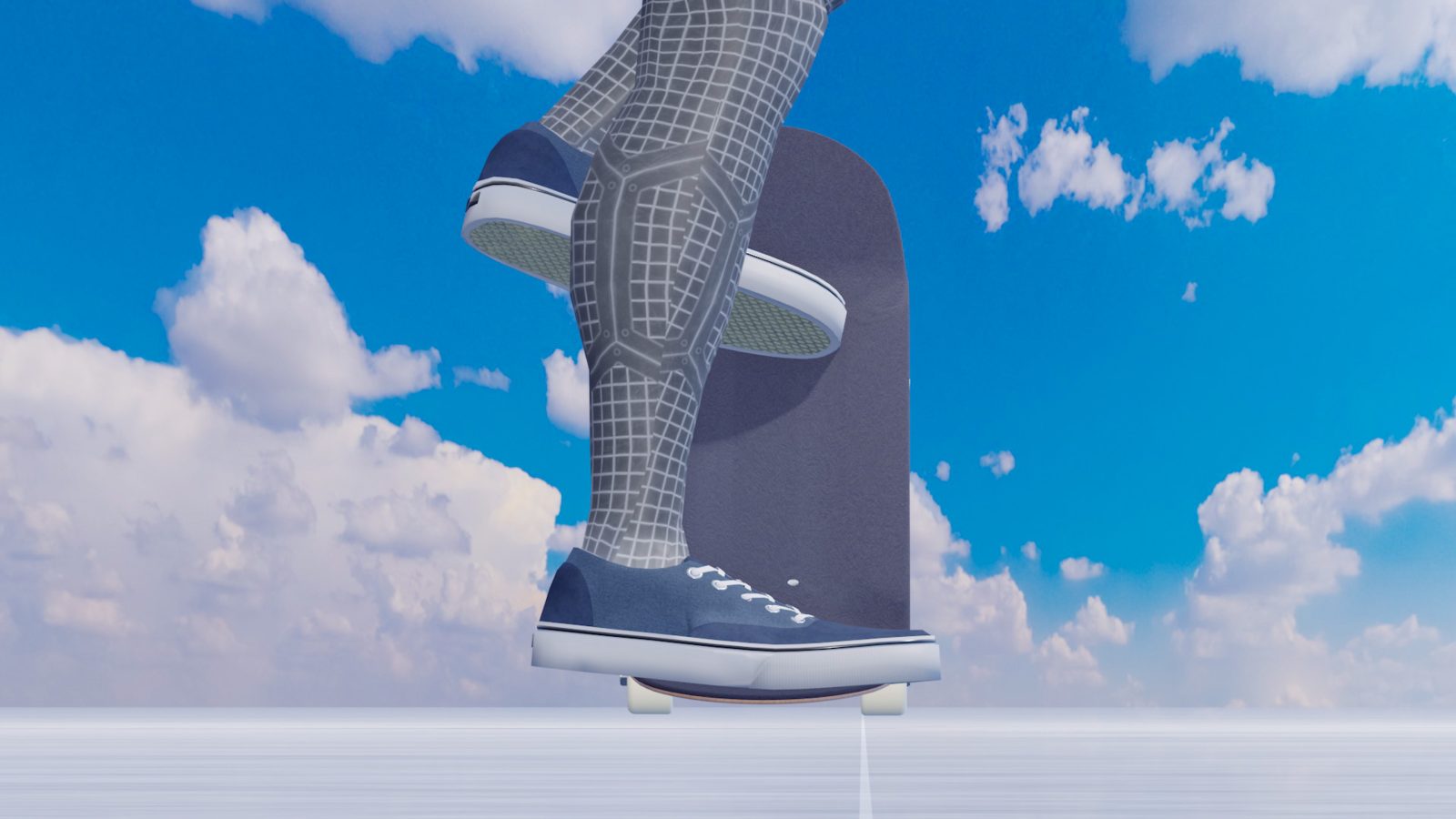
What happens when you stomp on the tail
In this clip, I tried reproducing what happens when you stomp on the tail by popping on my heel. Although my board does bounce up, my body's center of gravity stays low, which makes it impossible to bring up my front foot any higher. And, of course, I can't stay in the air for so long. So, make sure to pop on your toe.
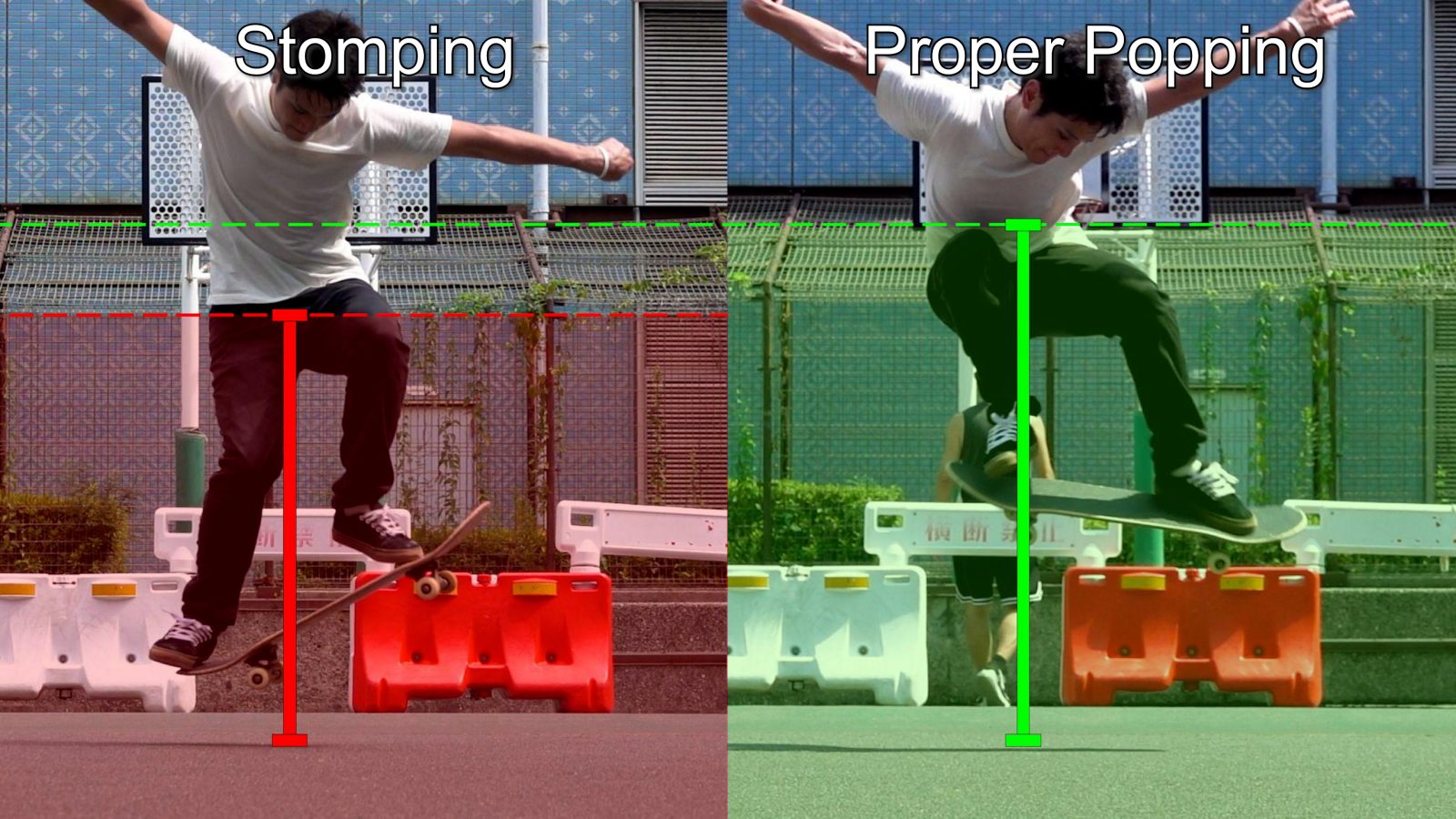
Step #3 Slide up the front foot
Board presses the front foot, not the other way around
Next, slide up the board with your front foot when the nose comes up. As mentioned earlier, you DO NOT move your front foot intentionally forward to press against the board. Otherwise, it only cancels out the force of the board. Instead, it is the board that pushes against your front foot.
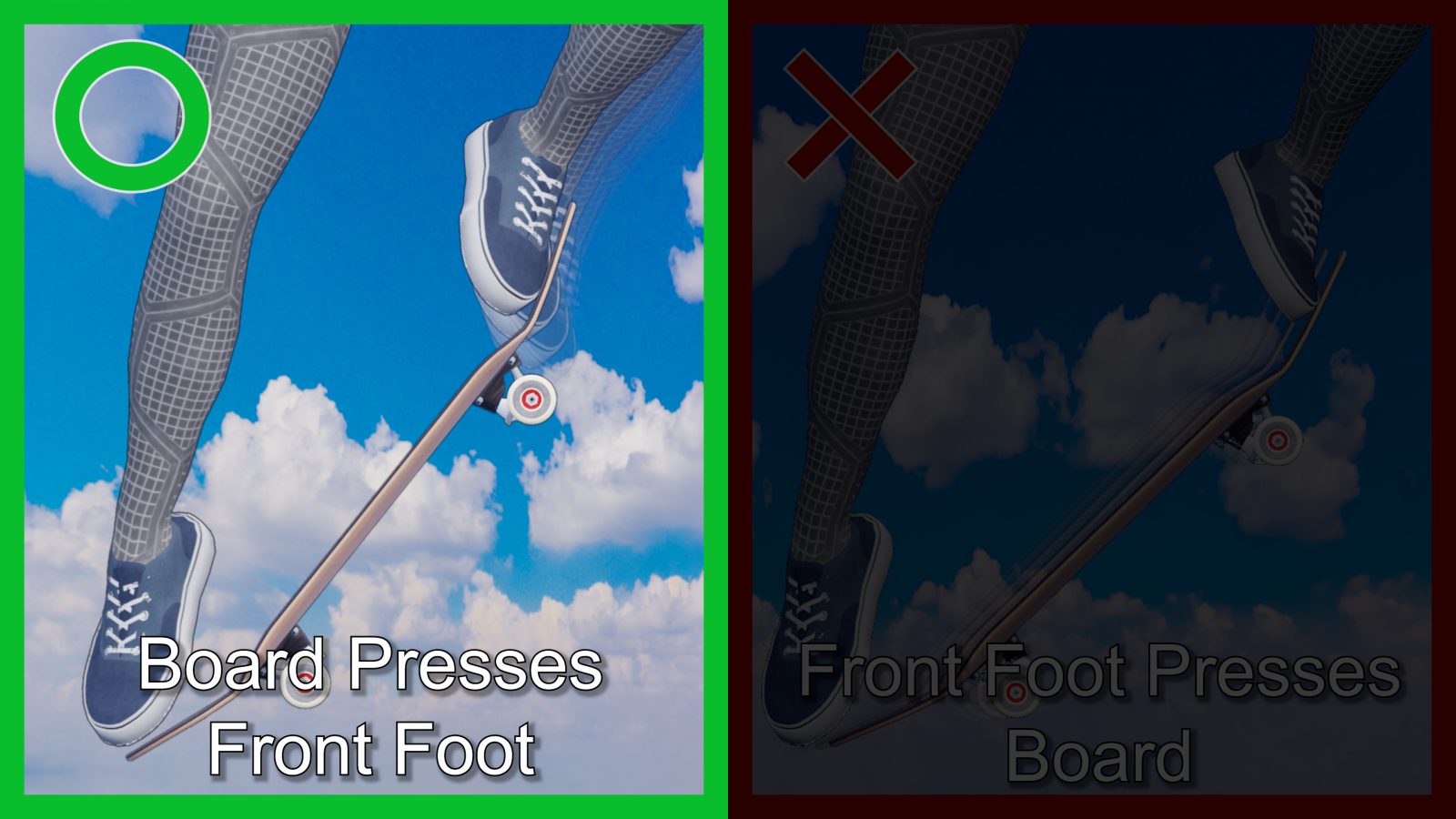
Pushing the front foot is not always evil
Please don't get me wrong. Pushing your front foot forward is not always evil. When you do an Ollie low, you have to push it forward to keep your front foot in contact with your board. As the nose doesn't have enough energy to come up, if you lift it too vertically, it will come off the board.
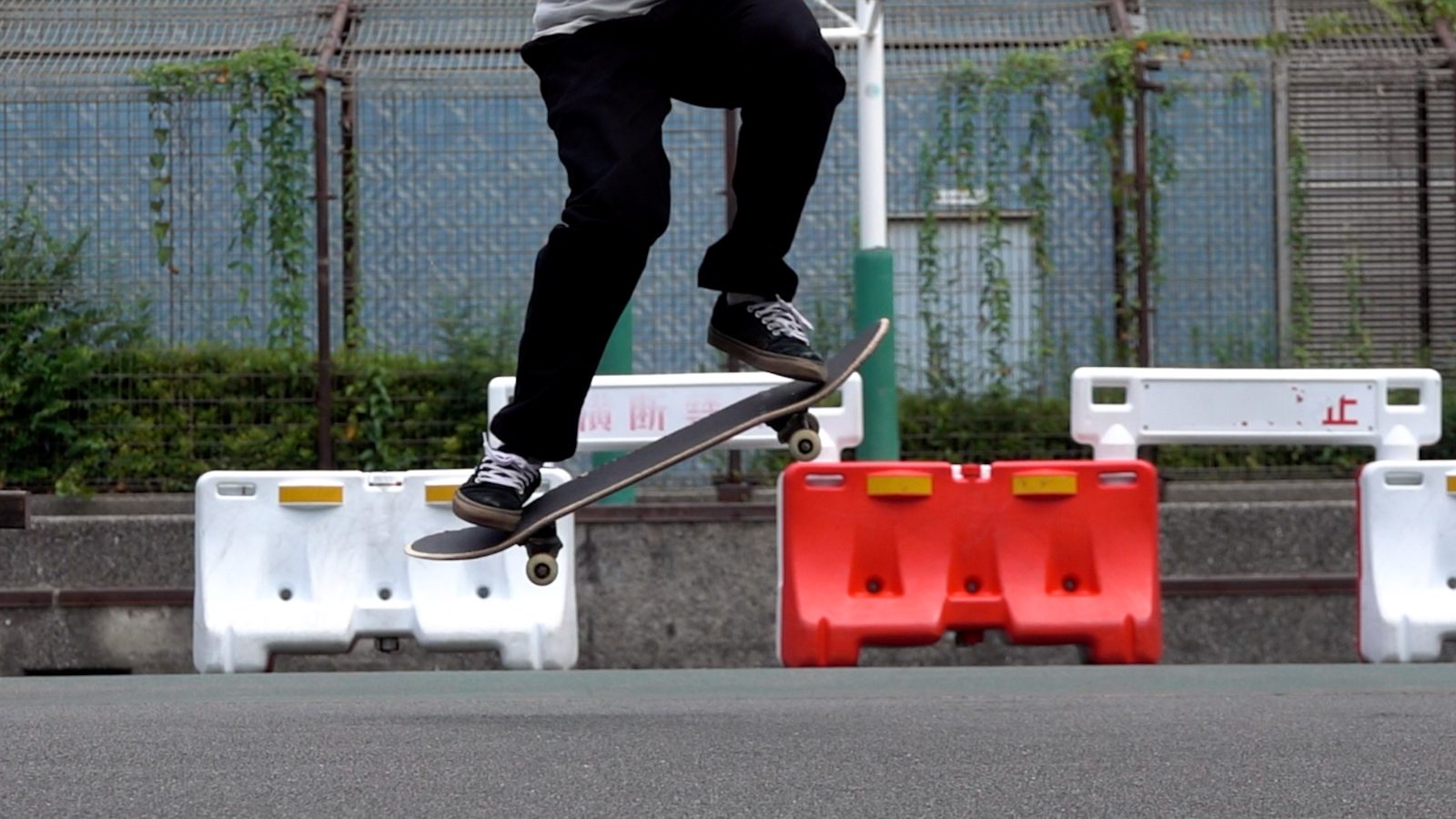
How to roll the front ankle
The importance of not pushing the front foot stands out when attempting a higher Ollie. If you keep your ankle relaxed, the force of the nose will roll it spontaneously, unlike in the practice where you hold the tail. Once your ankle is rolled, you'll have stable friction between the board and your front foot, and if you lift your front foot in this state, your board will follow it.
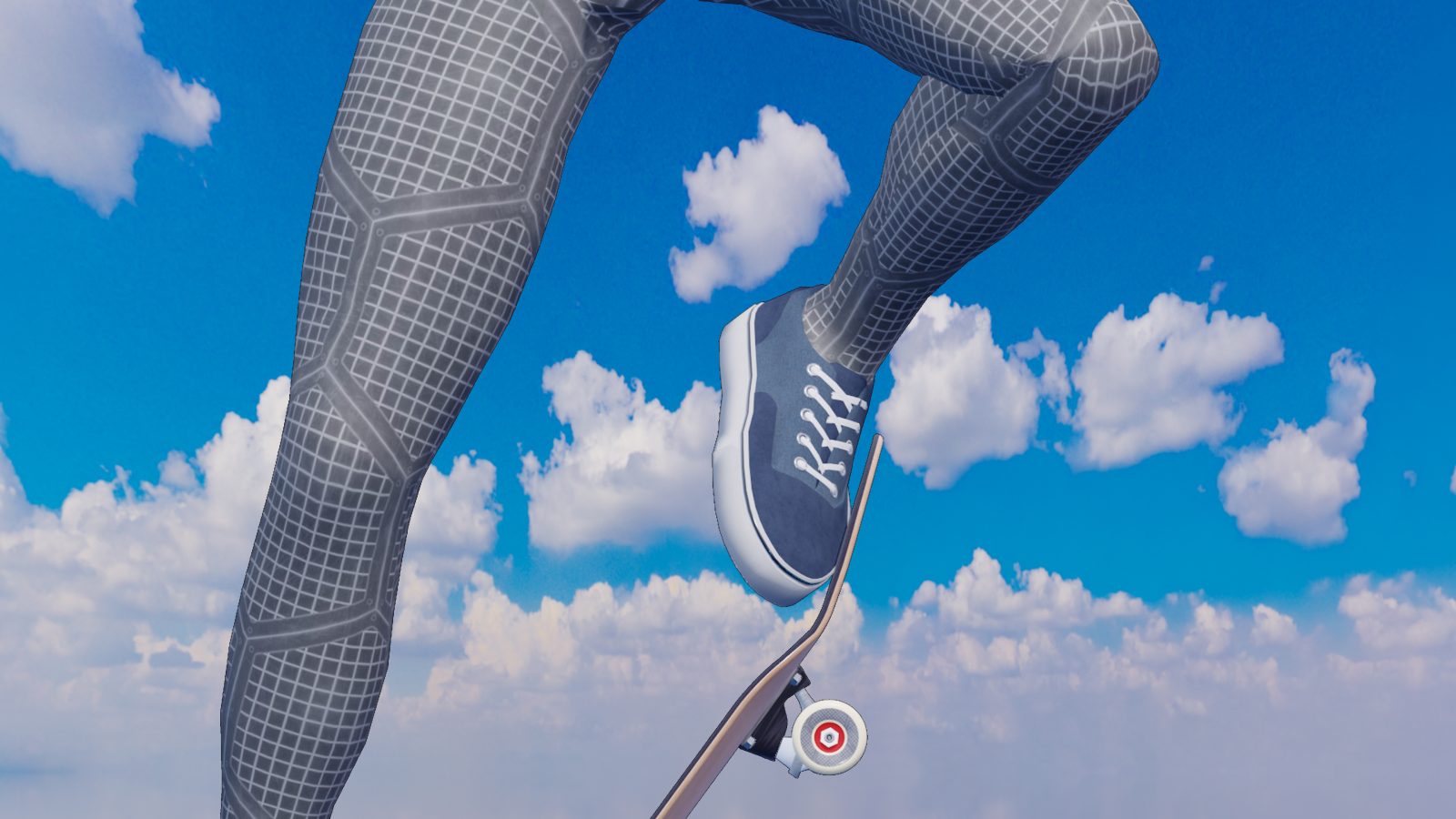
Bring up the front foot as high as possible
In the next step, I will explain the second half of an Ollie. But before that, please note the height of an Ollie has a lot to do with how high you can pull up your front foot. So, bring up the front foot as high as possible.
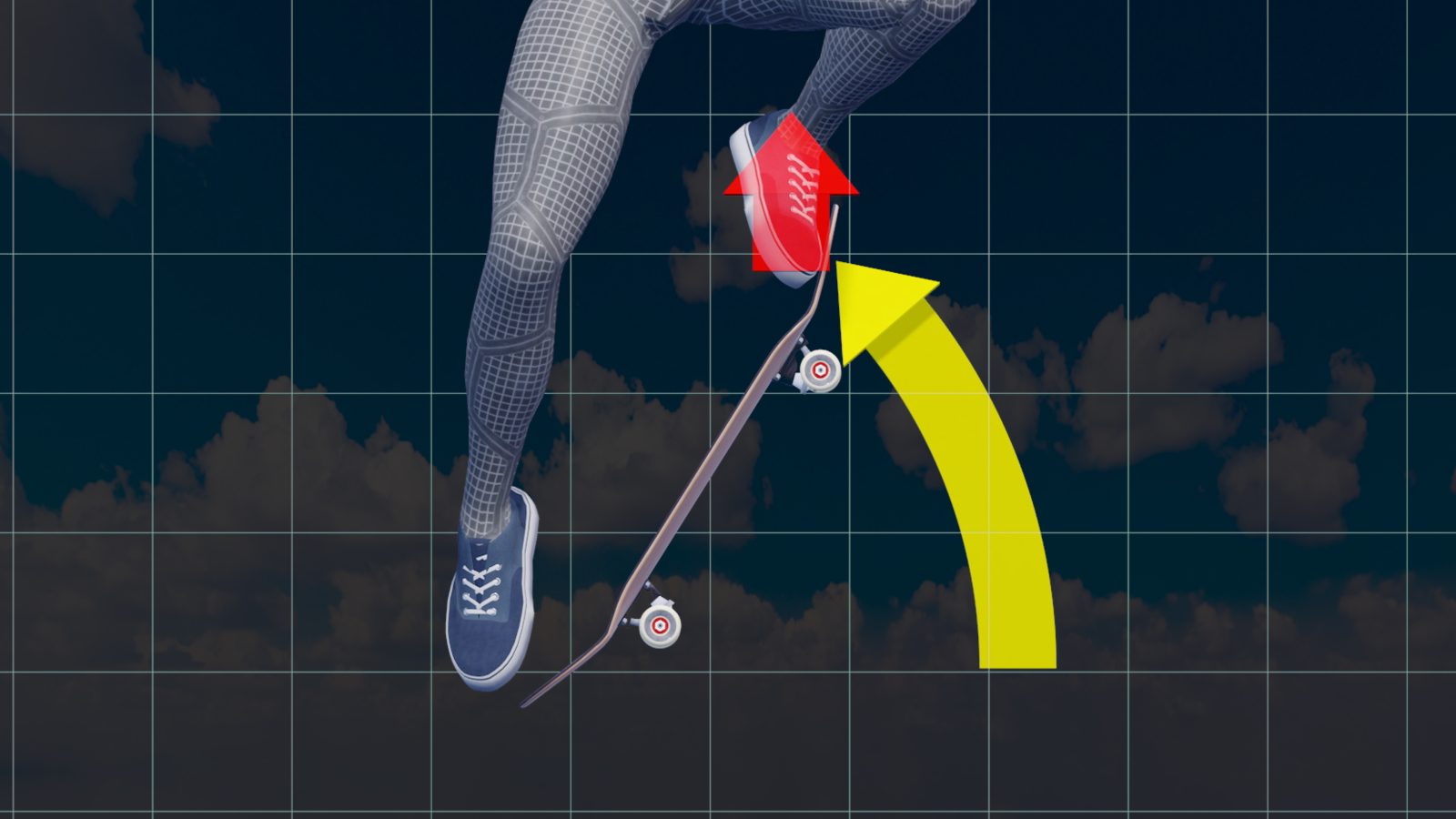
Step #4 Hold the nose
Push the front foot in the direction of its sole
And this is the last step. Hold the nose with your front foot. Push it in the direction of the sole relative to the center of gravity. From the first-person perspective, it looks as if the front foot is simply moving forward, but, in fact, it's different.
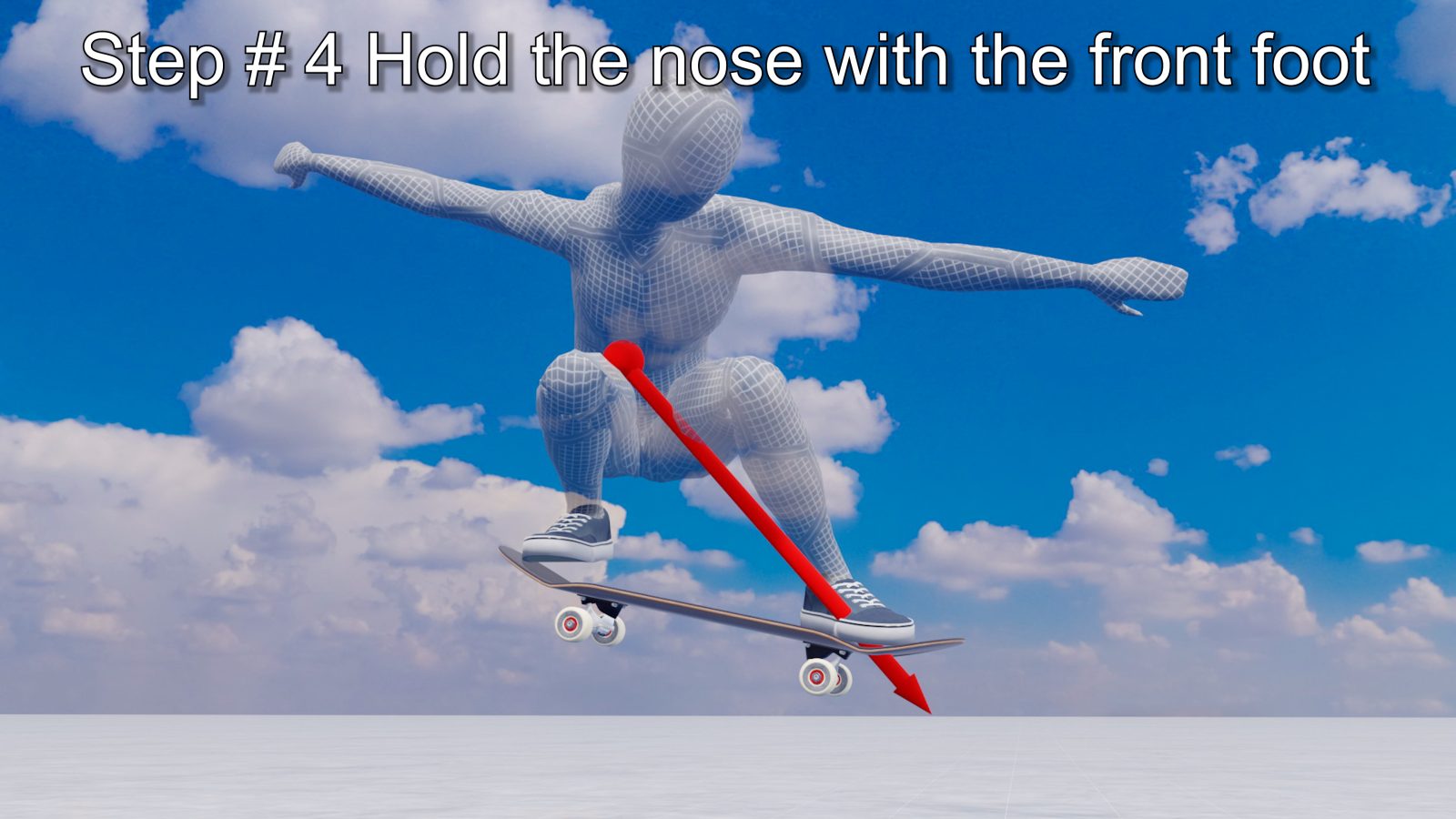
Push the front foot AFTER lifting it
The most important thing here is the trajectory of the front foot. There are an infinite number of routes connecting the position of the nose upon popping and when you poke out your front foot. Imagine a mountainous trajectory where you lift your front foot high and lower it by holding it down.
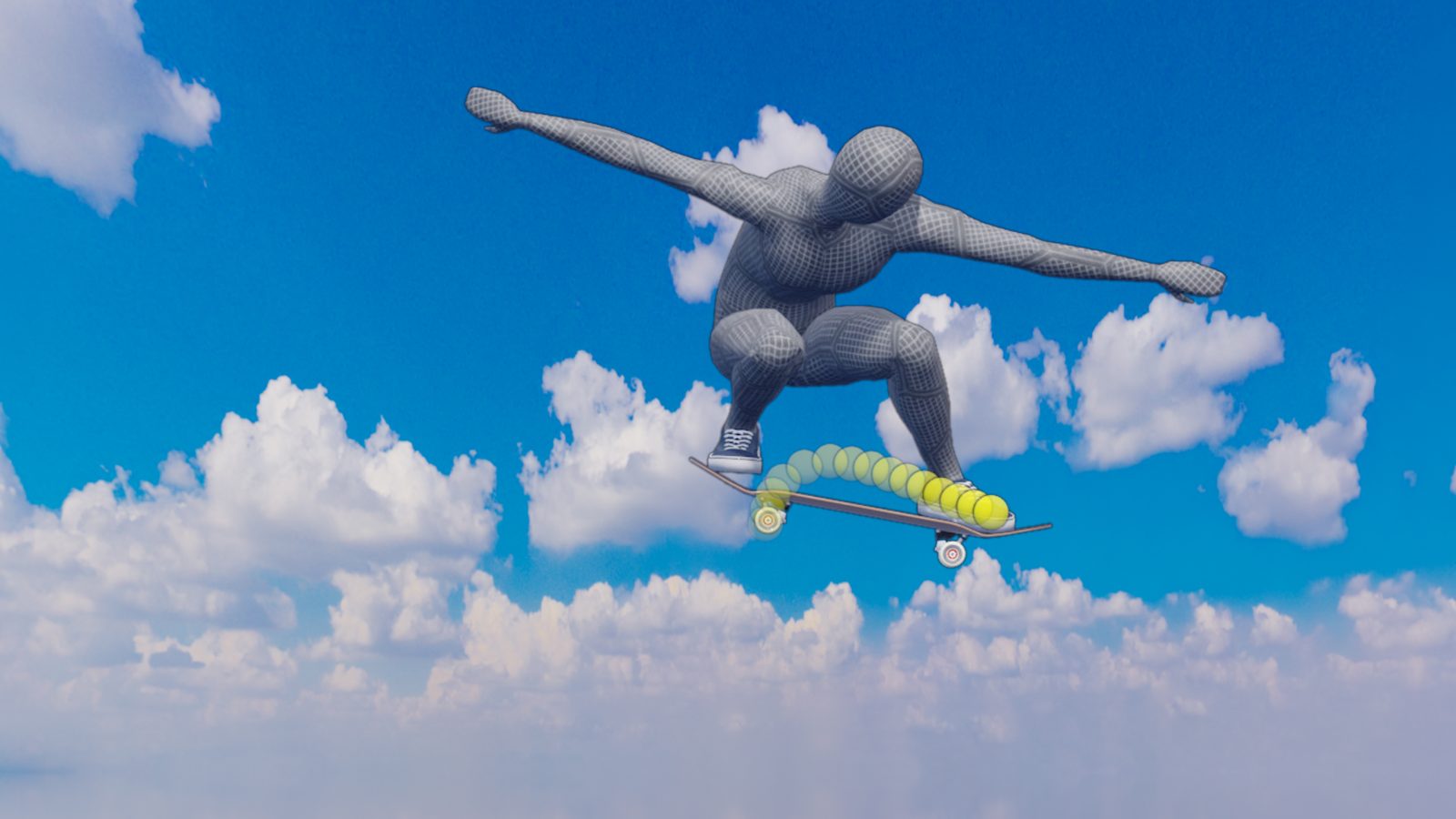
Why you should lift your front foot first
Any object in this universe always falls due to gravity after lifting. A skateboard is not an exception; the lifting force acts on the board gradually decreases while the front foot is sliding up, and the board eventually falls. You may be able to pull up the nose to some extent by pushing your front foot diagonally upward, but by the time you have pulled up the nose, your board and body will begin to fall. This means if you keep pulling up your front foot, you won't be able to generate any force to lift the tail.
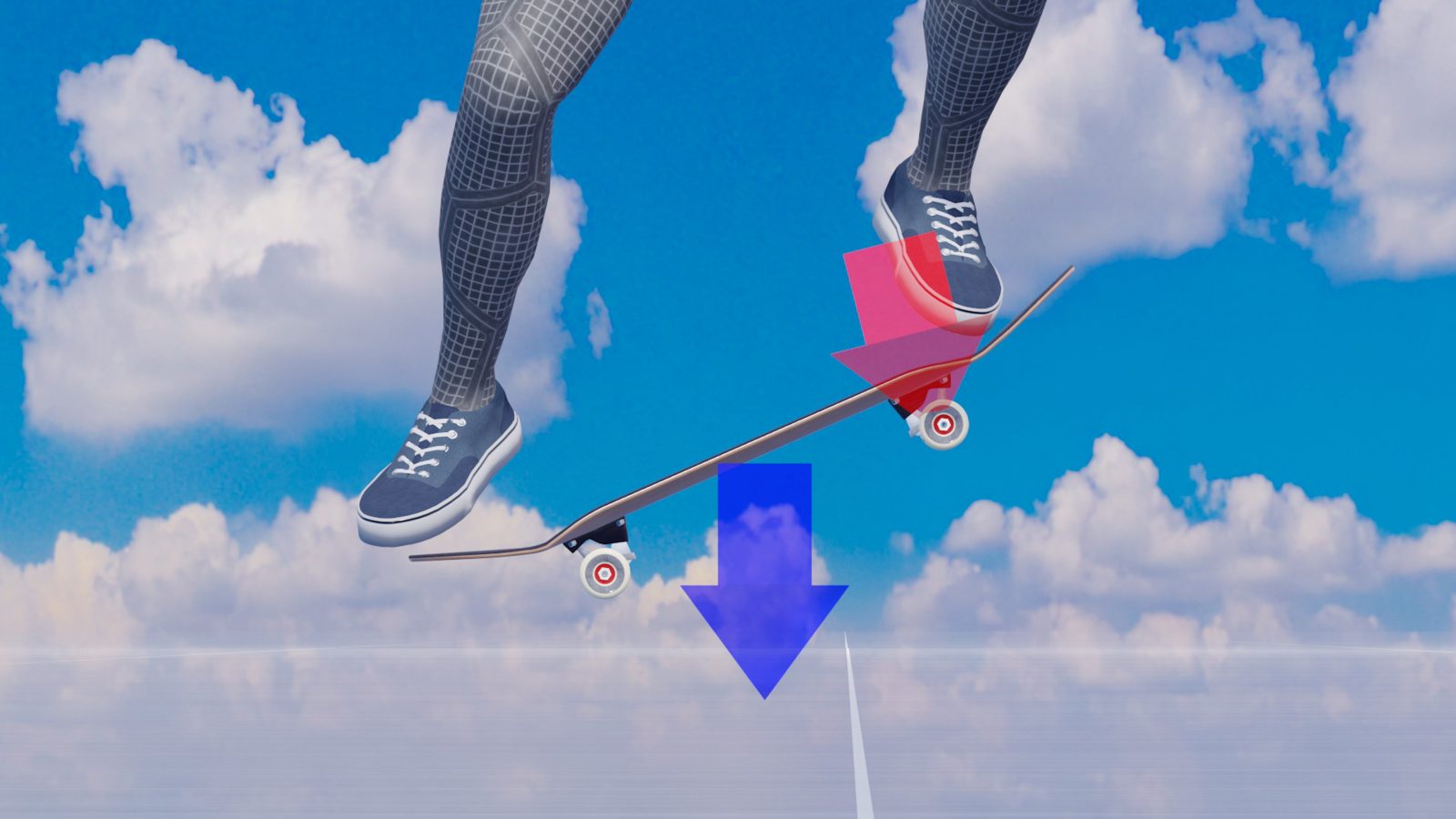
Front foot moves diagonally upward by pressing it horizontally forward
The same is true when you try to push your front foot straight forward. By trying to reduce the pressure of your body weight, there is an upward force acts on your front foot. This force and the horizontal force are combined to create a diagonally upward force, and the same as the previous step happens.
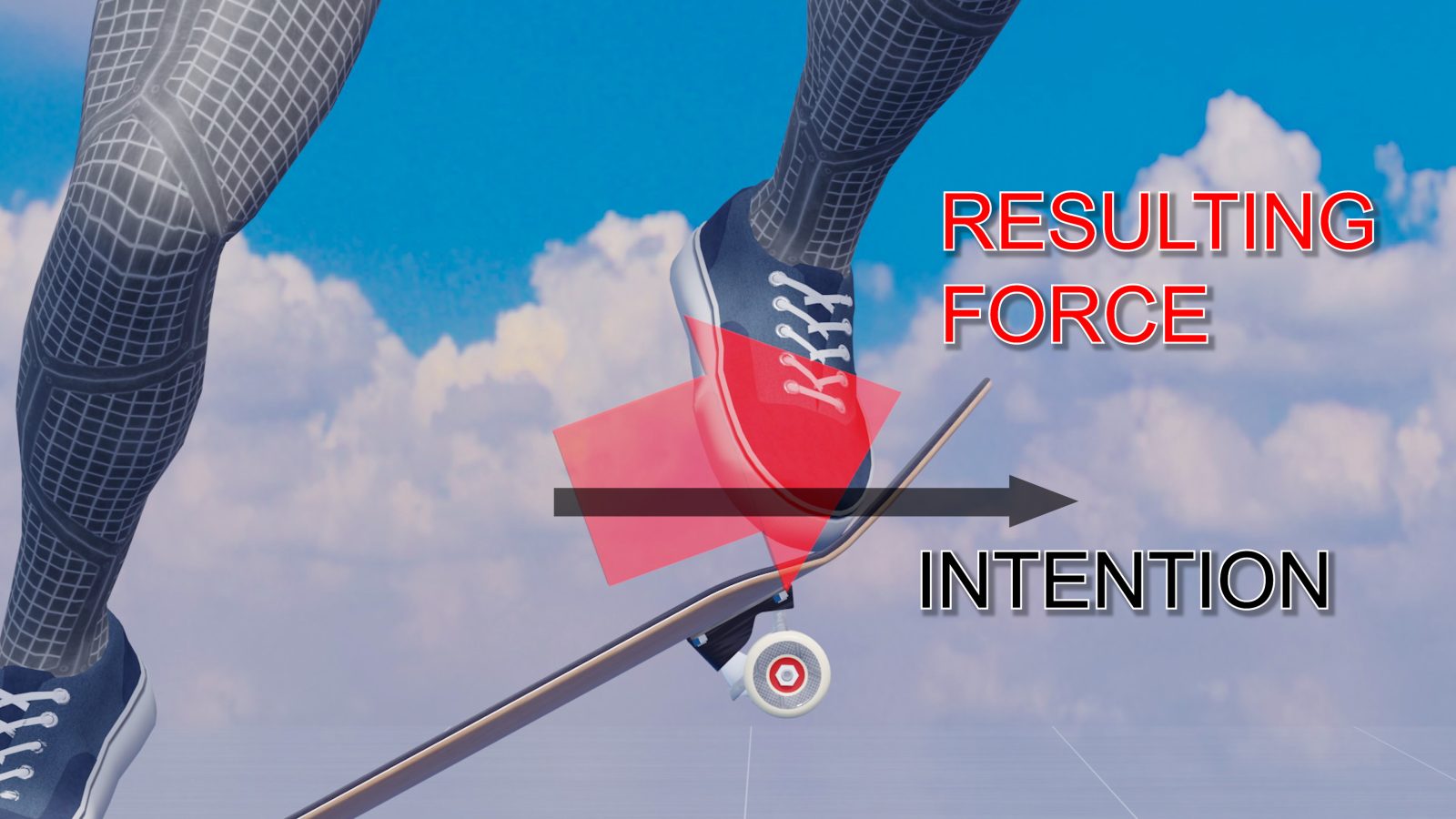
The difference in the velocity of the board's center of gravity and the nose
So, what should you do? To lift the tail, instead of pulling up the nose continuously, push it down while the board's center of gravity has a force to lift. Doing this creates a difference in the velocity of the board's center of gravity and that of the nose.
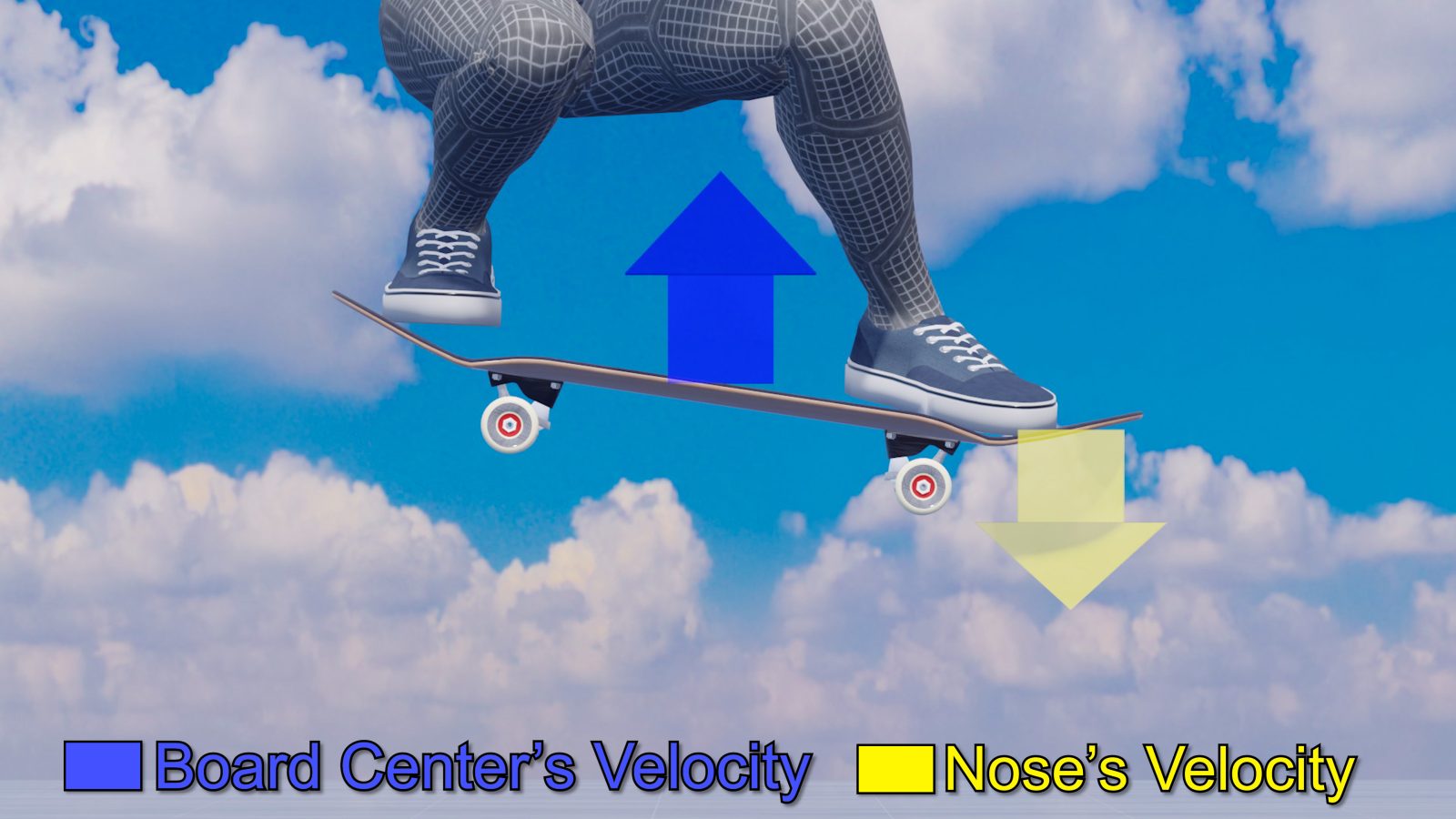
The tail won't lift when there's no difference in velocity
Conversely, if you continue to pull up your front foot or push it down too late, you will push down the nose after the board begins to fall. If you push down the nose when the board is falling, you won't be able to create a difference in velocity between the two, making it impossible to lift the tail.
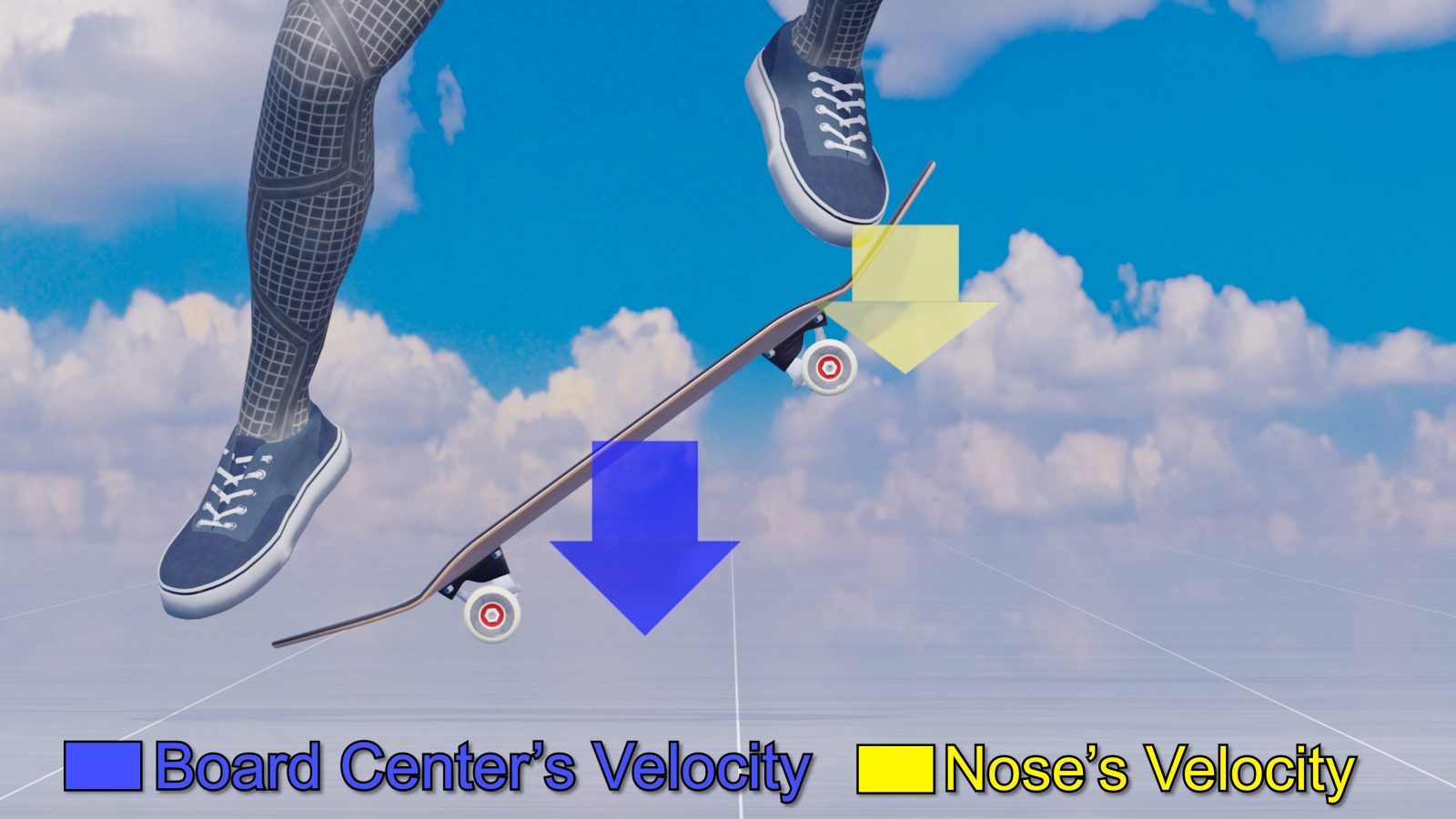
Aim for a mountainous trajectory
So, it would help if you lifted the nose quickly when the board has the energy to move upward and then push it down without pause once it reaches the highest point. Preferably, you want to move your front foot in a sharp and mountainous trajectory.
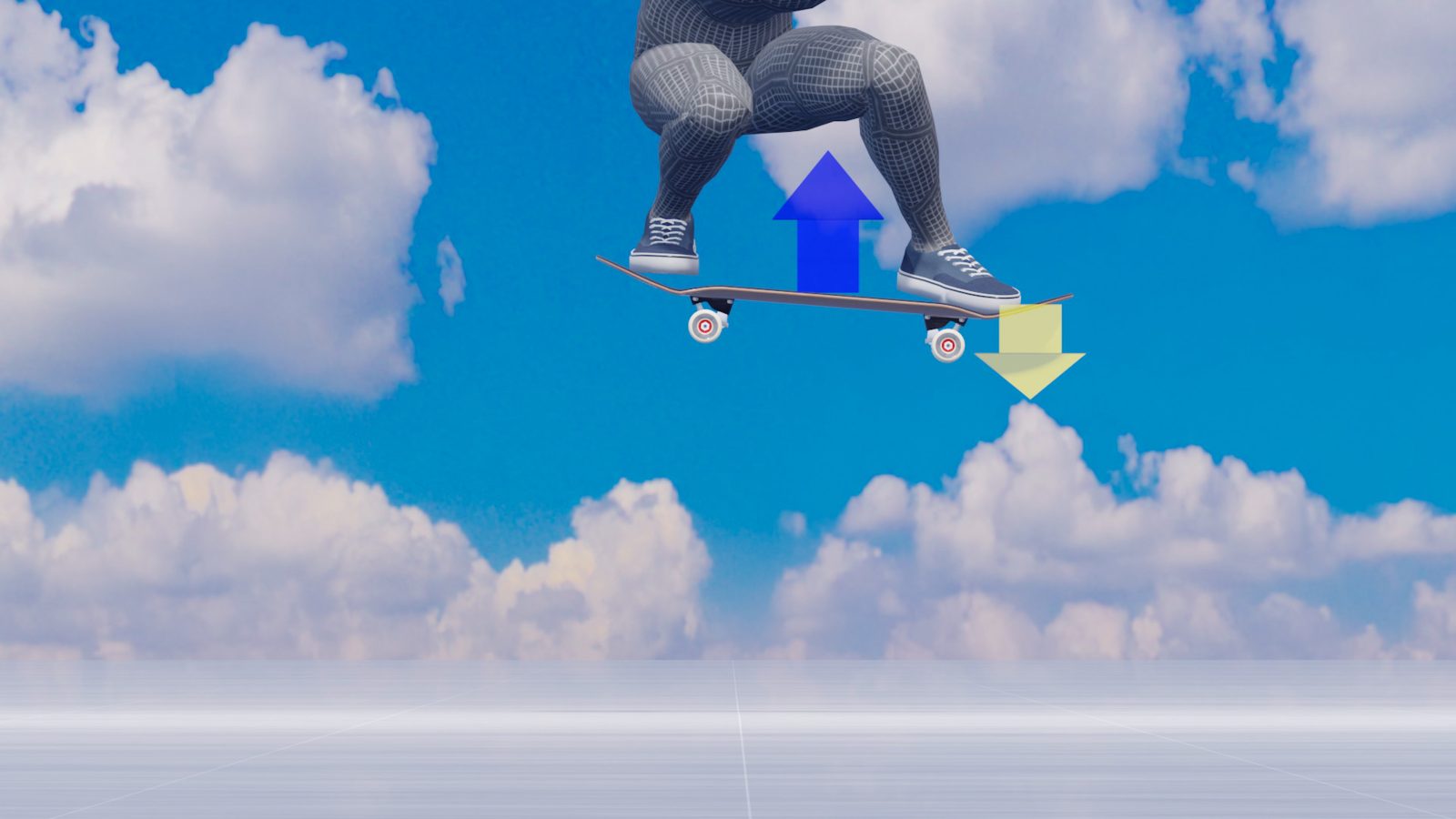

 Convert your video into 3D
Convert your video into 3D Facebook
Facebook Twitter
Twitter

